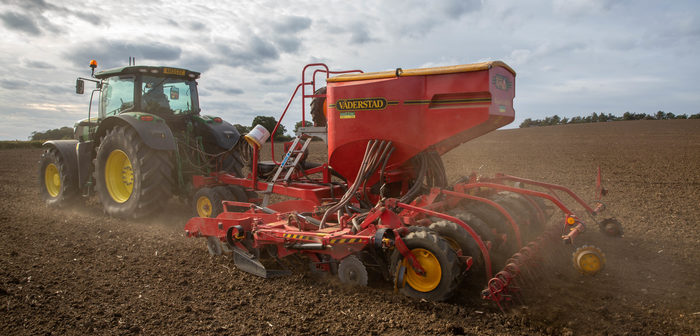Winter wheat LG Skyscraper is quick to get going in spring and also quick to pick up tillers, says contract no-till farmer Aaron Hogsbjerg who grew the variety for the first time this year.
“We really like LG Skyscraper because it is vigorous and fits well with our no-till regime,” he says.
Despite the challenging weather conditions of 2018, he achieved an average of between 9-10t/ha and compared well with other varieties grown on the Suffolk and Essex-based farms where he works.
For Aaron, planting date flexibility is a real benefit, and he reports that even the fields sown the week before Christmas went to 9t/ha.
“We were chuffed to bits. We used to grow Evolution, but LG Skyscraper is streets ahead.”
A different variety sown on 25 November only did 8.5t/ha, he reports, adding that Graham works well when it is in the right place and conditions are right, but is renowned for its slow growth.
“LG Skyscraper was quick to establish across the farm, and worked equally well across a number of soils, from sandy and clay loams, and even patchy light sand.”
“Since changing to a no-till regime, the improvement in the soil has been remarkable, it was now nicely friable and the crop was out of the ground in seven days.”
Moreover, he remarks, even in wet weather of autumn 2019 he has been able to get on the land, and drilling through a cover crop keeps mud off the drill.
However, drilling in a no-till regime can result in a few plants being lost early on, so seed rates ranged between 400 and 550 per m2, with the later drilled crops getting the higher rate.
“It sounds quite a high rate, but it gets us the results we wanted,” says Aaron.
He notes that because of its height, when growing LG Skyscraper, treatment with a PGR is necessary but effective; for example despite the heavy rainfall in June 2019, none of it fell over.
“This could be a problem in other years, but you can manage crop height using PGRs.”
Moving on to talk about his strategy, he explains that 25% of the land is used for growing sugar beet, and rotations can be three, five or seven years, depending on the land and conditions.
“We have been building our confidence in the break crop, and next year we might grow more oilseed rape.”
Aaron follows a standard programme with a “no fire engines” approach particulary at the start of the season.
“We are believers in feeding the crop to keep it healthy to keep chemistry use to a minimum, and we found that the crop kept itself quite clean.”
He tissue tests the crop to check for any nutrient deficiencies. This year plants were low in boron, resulting in top-ups of both boron and manganese and reduced rates of fungicides.
Moreover, he was pleased to discover that even in the late, wet harvest of 2019, bushel weight held up, where other varieties may have struggled.
“LG Skyscraper is a nice variety to combine and the straw chops well.”
Plans are to grow more of it, and it will be Aaron’s variety of choice for late drilling after sugar beet.
“Of course, so far we have only grown it for one year, but we really like this variety.”
Farm facts:
100 per cent contract farming
Total farm area: 1800 ha
Seed rate: 400 -550 per m2
Rotations:
Seven year: OSR, wheat, sugar beet, spring barley, wheat, winter beans, wheat
Three year: Sugar beet, spring barley, winter wheat
Fertiliser: Liquid
Crop protection: Fungicide applied at T0 and T1 or T1.5
Herbicide Strategy:
Pre emergence: Movon (Flufenacet + flurtamone + diflufenican) Wicket (Prosulfocarb)
Post emergence: Sunfire (flufenacet) Claymore (pendimethalin) where needed
Early spring: Broadway star (pyroxsulam + cloquintocet-mexyl + florasulam) for broome patches




